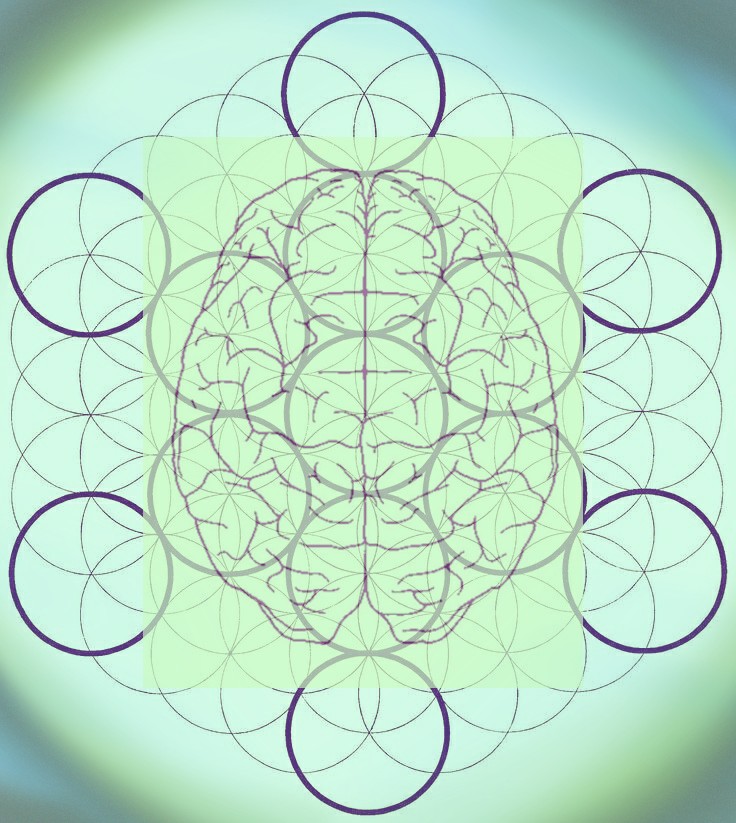
Author LaLa Merrit discusses how hula hooping can be used as mental therapy to help keep the brain healthy
Yes, you read that right. Your hula hoop is changing your brain, but is it surprising? Hoopers and flow artists everywhere are finding their practice has changed many aspects of their lives, nearly all are positive. I’m sure that, like myself, you feel that way too. It is definitely not an unsupported assumption to make; peers in the community may affirm this, but there is also scientific evidence backing the behavioral therapy we have all been participating in.
Mindfulness is the practice, and probably a word that is not unfamiliar due to its rise in popularity as an effective therapy. Mindfulness therapy is used in psychology to treat a variety of disorders, perhaps the most common being bi-polar and major depressive disorders. It is recognized that several disciplines and practices can cultivate mindfulness like meditation, tai-chi, or yoga. The moving meditation that is often practiced for freestyle flow as well as incessant drills clearly fits these criteria. Mindfulness meditation is defined as “a family of self regulation practices that focus on training awareness and attention in order to bring mental processes under greater voluntary control.” (Walsh, 2006). In other words it means to learn to be in the moment, as opposed to constantly reflecting on the past or worrying about the future. Twenty minutes of dedicated daily practice is all it takes. Try to focus on moment to moment awareness of your experiences without judgment. Eventually this state can be effortless to reach over time.
Mindfulness can explain some of the other improvements that may be taking place outside the circle as well. The attention and coordination that is practiced with flow props naturally transfer to other aspects of mental development. Benefits include improved self control, objectivity, concentration and clarity, and emotional intelligence. The learned skill of self awareness and observation neurologically disengages negative automatic pathways created from prior learning, creating room for new processes. Neuroplasticity, or the notion that the adult brain remains changeable, explains why regular mindfulness practice alters the physical structure and function of the brain. Thicker brain regions associated with attention, sensory processing, and sensitivity to internal stimuli have been observed as distinctly higher grey matter concentrations and thicker brain stems. (Davis, 2011) It is clear we all have good reason to have circles on the mind!
The question remains: are we being mindful in our practice? Better yet, how can we improve mindfulness so that we can continue applying the practice in our daily lives? Begin by being honest with yourself and figuring out if the purpose of your practice is the practice itself, and what we gain from daily commitment. Obviously we practice skills to get better at them, but is the focus on being a better hooper in your personal journey (which is objective in nature), or being the BEST hooper? Comparison is killer, and we all do it in one degree or another, but one cannot be mindful in practice if the focus is outside the self. Awareness of the lack self focus and is the first step in a journey to awareness. Below are a few tips for creating mindfulness you can apply during flow:
– Begin practice with a short meditation. Either sitting or lying down, with body “grounded” or engaged in the sensation of the earth beneath. Bring focus to the breath, and awareness of bodily sensations (What do you hear, smell, taste, feel, and see?). Normal thought patterns will invade the mind, acknowledge them, and let them pass with the breath. Scan the body from head to toe and bring awareness to how each part feels, releasing tension. Repeat this process as necessary.
– Set intention for your practice to keep the focus on self. My most common intention: “I intend this practice for my well-being and to nurture the things I love; myself and my dance.”
-While practicing use the same above techniques. Focus on breath and how the prop feels on or off your body, let invading thoughts pass as awareness re-centers with body and prop, hold intention so that effort is placed valuably.
Davis, D. M., & Hayes, J. A. (2011). What Are the Benefits of Mindfulness? A Practice Review of Psychotherapy-Related Research. American Psychological Association, 48(2), 198-208. Retrieved January 20, 2016.
Walsh, R. & Shapiro, S.L. (2006). The meeting of meditating disciplines and western psychology: A mutually enriching dialogue. American Psychologist, 61 (3), 227-239








Leave a reply
You must be logged in to post a comment.